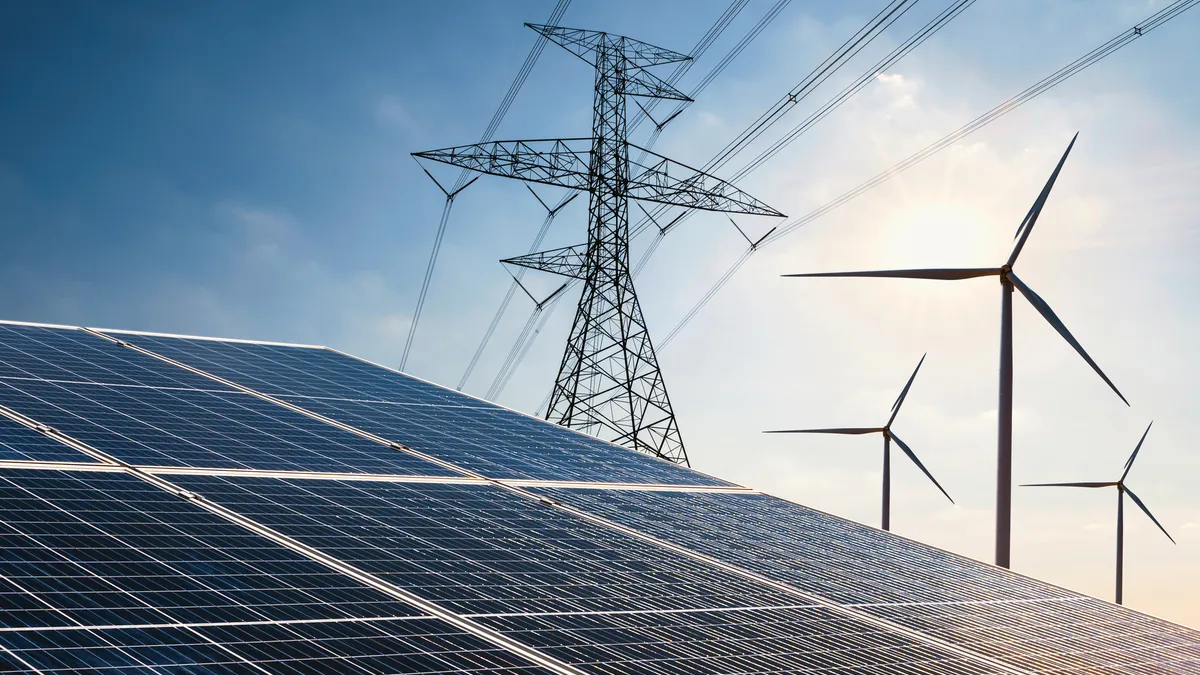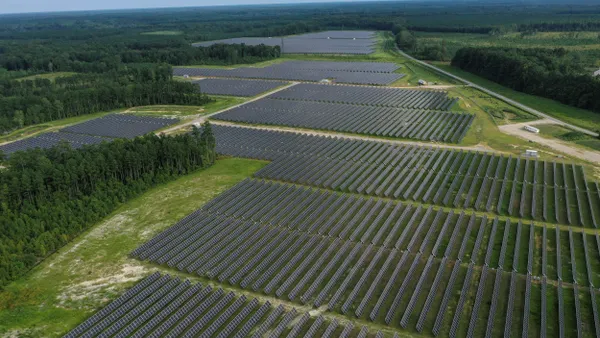Dive Brief:
-
The Inflation Reduction Act is “bigger, bolder and ultimately more transformative” for the U.S. energy sector than almost any other legislation ever enacted, Tom Starrs, vice president of government and public affairs for EDP Renewables, told attendees of the RE+ conference in Anaheim, California last week.
-
While the clean energy provisions of the Inflation Reduction Act were many years in the making, the law’s creation “wasn’t a direct path, and it wasn’t inevitable,” said Alexander McDonough, a partner at political consulting group Pioneer Public Affairs.
-
McDonough encouraged attendees at the convention to tout funding from the act when announcing new projects in the years to come as a means of winning over Americans who remain skeptical of the legislation.
Dive Insight:
Last week’s RE+ conference had a celebratory mood, with many conference goers anticipating an influx of capital as a result of the Inflation Reduction Act. But while similarly exultant, participants on a panel covering the history of the act warned that funding recipients must still prove the bill an economic success.
The landmark piece of legislation, which emerged in an uncertain and even hostile political climate in 2018, passed on party lines, and remains a polarizing act ahead of a series of critical elections, McDonough said.
“Even more fundamentally, this could be a race against time depending on future election outcomes,” Starrs agreed. “We need to figure out how to deploy, deploy, deploy in the next couple of years, because people are looking for tangible evidence that this law made a real difference in their lives.”
Erin Duncan, vice president of Congressional affairs for the Solar Energy Industries Association, also called attention to the 2020 elections in Georgia, which saw two democratic Senators elected by thin margins and split the Senate 50-50, with a Democratic vice president for a tie breaker. That, Duncan said, set the stage for tax credit extensions that had languished for two years to gain momentum.
Passing the bill also required building a huge coalition of stakeholders who brought their own interests to the table and led to the inclusion of provisions such as the domestic content requirement to qualify for tax credits and labor standards and new incentives for emerging technologies like carbon capture and hydrogen, Starrs said. While not exactly what initial proponents of clean energy legislation had in mind — the original goal was of renewable energy advocates to extend existing tax credits for wind and solar — Starrs said he believed these additions will ultimately leave the renewables industry better than they found it.
“The entire rest of the energy sector — coal, natural gas pipelines, all of it is heavily unionized,” Starrs said. “The solar industry and clean energy in general is the last of the holdouts [without prominent unions], in the energy sector. And we kind of got by because we were young and new and expensive, and lots of people wanted to support us. But those arguments only flew as long as we continued to be young and cool and expensive, and as the industry matured, in my view we needed to start stepping up to the plate [with labor protections].”
But the work isn’t done, McDonough said. The next step, he said, is implementing the bill in a way that makes Americans — particularly those who didn’t support the bill — believe the legislation was worthwhile. And that will mean spreading the word as projects that received IRA funds are announced and break ground, he said.
“That’s not just lobbying and campaign contributions,” McDonough said. “It’s about telling the world of [the IRA’s] success — making sure that if a company is building a project that people know about it, that it gets in local news, and that people understand these programs are important.”














